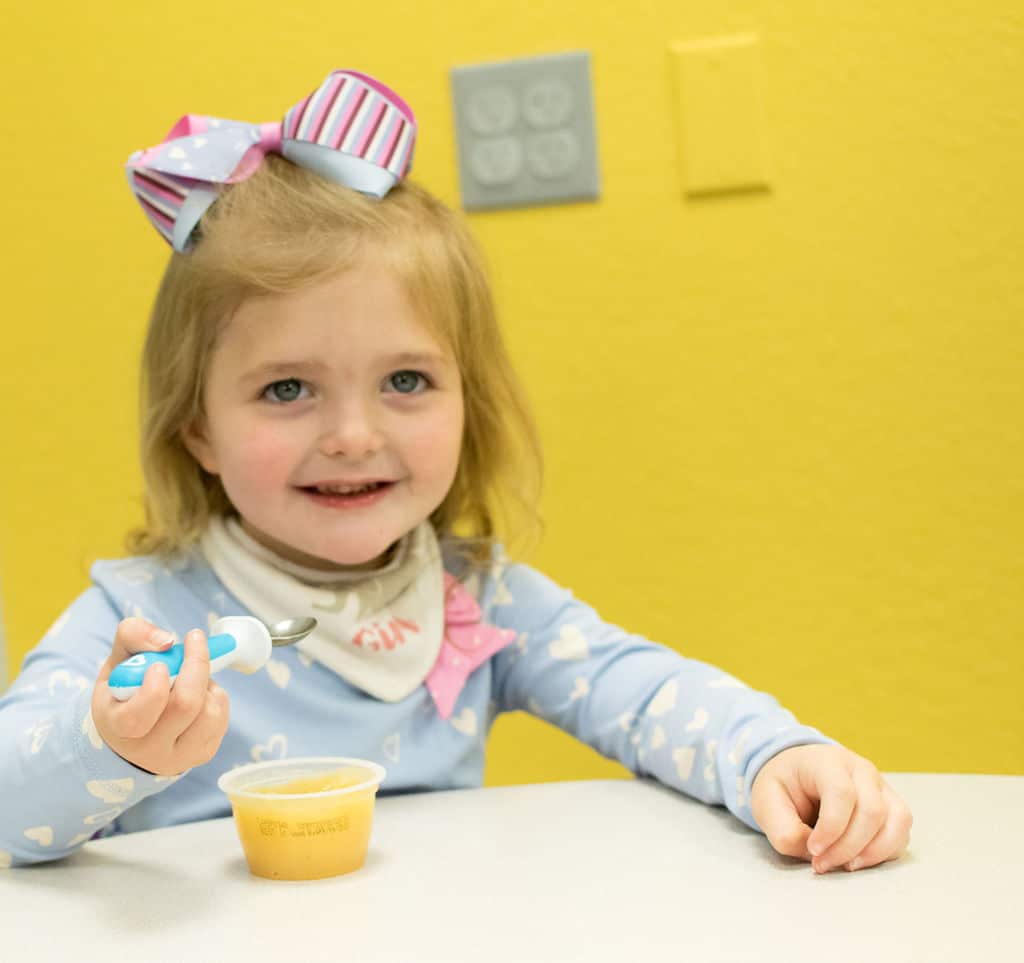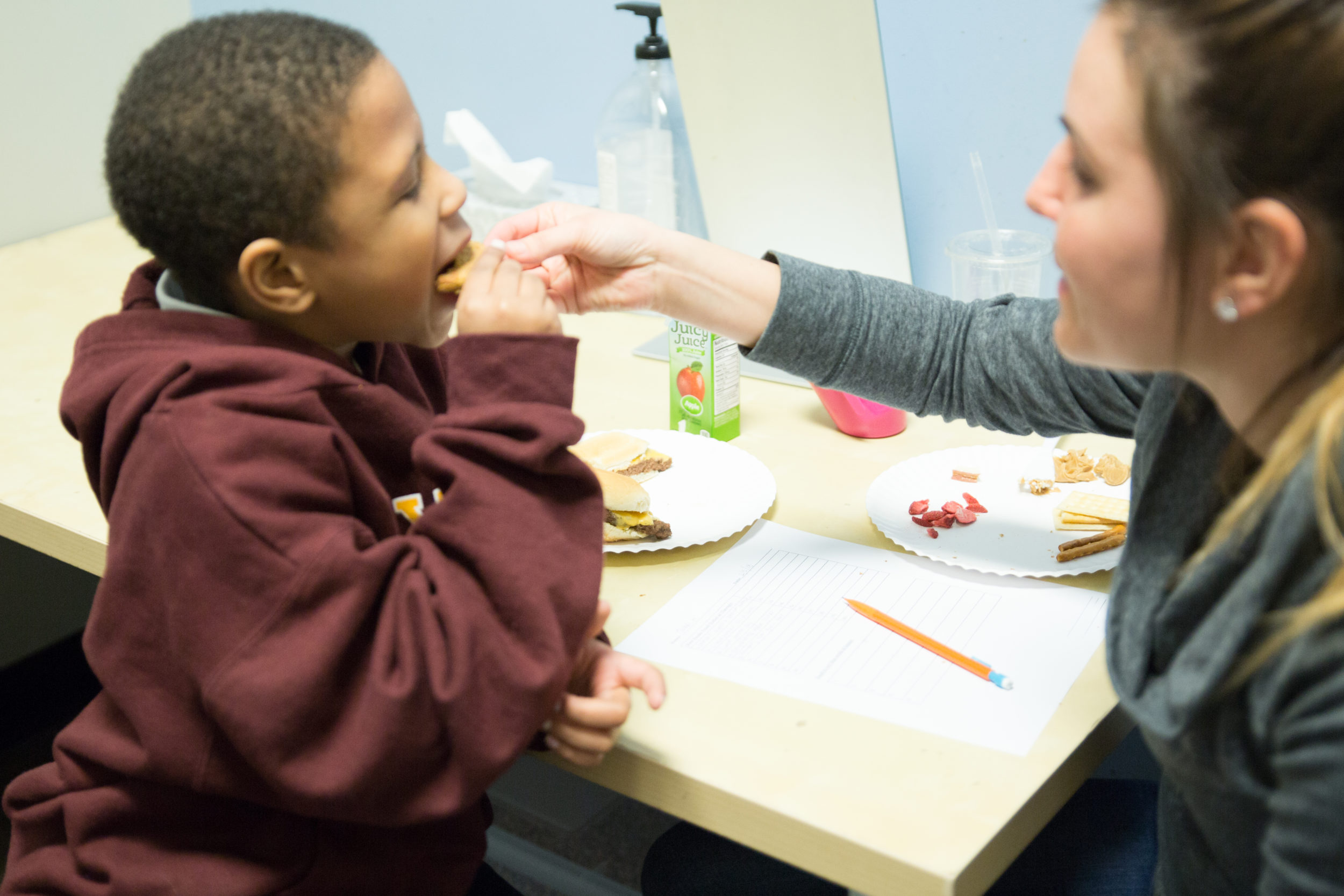Expert Support for Food Aversion Therapy Long Island
Wiki Article
Browsing the Path to Successful Feeding: Ingenious Approaches and Interventions for Effective Feeding Treatment
Are you struggling to find effective approaches and treatments for successful feeding therapy? And also, we'll reveal you the value of teaming up with family members and caretakers for optimum feeding results. Get all set to browse the course to successful feeding!Assessing Feeding Difficulties and Determining Goals
You must start by analyzing your kid's feeding challenges and determining particular objectives for their treatment. It's essential to connect these goals with your kid's feeding specialist so they can customize the treatment sessions to attend to these certain obstacles. By examining your kid's feeding difficulties and setting objectives, you are taking the initial action in the direction of helping them develop successful feeding skills.Applying Evidence-Based Techniques for Feeding Therapy
Executing evidence-based strategies for feeding therapy can lead to favorable outcomes for kids. You are guaranteeing that the treatments used are sustained by scientific study and have been proven reliable when you incorporate these techniques into your youngster's treatment plan. This method raises the likelihood of success and helps attend to the specific feeding challenges your child might be experiencing.By adhering to evidence-based techniques, you can supply your child with the most effective possible treatment and support. These strategies might consist of utilizing a variety of sensory experiences during nourishments, such as exploring various textures and flavors, to motivate approval of brand-new foods. In addition, carrying out behavior adjustment strategies can help resolve choosy eating habits and advertise much healthier consuming patterns.
An additional crucial aspect of evidence-based feeding treatment is involving the family in the therapy process. By offering education and support to caregivers and parents, they can play an active duty in aiding their kid get over feeding challenges. This collaborative technique boosts the efficiency of therapy and advertises long lasting favorable changes in your kid's eating practices.

Addressing Sensory Processing Issues in Feeding Treatment
Addressing sensory handling issues in feeding treatment can be tough, however it is important for advertising a positive consuming experience for kids. When you come across a child with sensory processing difficulties during mealtime, it is very important to understand that their responses to certain appearances, tastes, smells, or perhaps sounds are not willful (food therapist farmingdale). By acknowledging and attending to these problems, you can aid develop a helpful atmosphere that motivates healthy consuming habits
One effective method is to introduce brand-new foods progressively. Beginning with little, non-threatening parts and slowly enhance the quantity with time. This method allows the child to become familiar with the food and its sensory homes at their own pace. Additionally, offering a selection of tastes and structures can help desensitize their sensory system and broaden their food choices.
Engaging the youngster in sensory play activities can also be beneficial. Encourage them to explore various appearances, such as squishing, squeezing, or touching numerous food items. This can help normalize sensory input and decrease hostilities to specific appearances.
One more important aspect is supplying a calm and structured eating setting. Decrease distractions, such as loud noises or brilliant lights, which can overwhelm their detects and prevent their capacity to concentrate on eating. Developing a predictable regular and utilizing visual schedules can also aid the kid feel even more safe and in control throughout nourishment.

Utilizing Assistive Modern Technology and Adaptive Devices
Utilizing assistive technology and adaptive equipment can considerably improve the feeding experience for youngsters with sensory handling difficulties. Nourishment can be challenging and overwhelming when you have difficulty with sensory handling. Yet with the right devices, you can make it a much more satisfying and successful experience.One option is using specialized plates and tools made to suit your requirements. These tools might have textured handles or a larger grasp, making them simpler to hold and manipulate. Plates with separated sections can aid divide various foods and stop them from touching, which can be a source of pain for some children.
Along with specialized plates and tools, there are likewise assistive tools that can be made use of throughout feeding. A weighted vest or lap pad can provide deep pressure input, aiding to relax and manage your sensory system. A shaking tooth brush or chewable precious jewelry can offer oral sensory excitement, making the act of eating much more enjoyable.
Technology can also play a function in boosting the feeding experience. There are apps and devices readily available that can supply visual or auditory signs, such as timers or motivates, to help you stay concentrated and arranged during mealtime.
Collaborating With Households and Caretakers for Effective Feeding End Results
When teaming up with families and caretakers, you can collaborate to develop a caring and supportive environment for successful feeding outcomes. By including households and caregivers in the feeding therapy procedure, you can get valuable understandings right into the child's feeding habits, preferences, and obstacles. food aversion therapy long island. This collaboration permits a holistic strategy to feeding therapy, dealing with not just the physical elements but additionally the emotional and psychological elements that may impact a child's feeding capabilitiesOne trick facet of teaming up with caretakers and that site family members is providing education and learning and training. By equipping them with knowledge and abilities, they can proactively take part in the feeding therapy procedure and support the youngster's development beyond therapy sessions. This can consist of educating them feeding methods, methods for handling mealtime actions, and recognizing the importance of consistency and regimen in developing healthy eating habits.
Additionally, including families and caregivers in setting goal and treatment preparation makes certain that their point of views and goals for the youngster are taken into factor to consider. By collaborating, you can create achievable and sensible goals that align with the family members's worths and concerns - food therapist long island. This collaborative approach fosters a feeling of ownership and empowerment, producing a solid structure for effective feeding end results
Furthermore, open and regular communication with families and caretakers is important for reliable partnership. By preserving continuous discussion, you can resolve worries, supply support, and make essential modifications to the feeding therapy plan as required. This communication additionally enables sharing development updates, commemorating achievements, and recognizing any type of obstacles or barriers that may occur.

Conclusion
Congratulations on finishing this short article on navigating the path to successful feeding! You have checked out numerous techniques and treatments for reliable feeding therapy, such as evaluating obstacles, executing evidence-based techniques, attending to sensory handling concerns, and making use of assistive technology. By collaborating with caretakers and family members, you can ensure successful feeding end results. Remember to always stay positive and ingenious in your strategy to feeding treatment. Maintain up the terrific job!It's important to communicate these objectives with your youngster's feeding specialist so they can customize the treatment sessions to address these this post certain challenges.Implementing evidence-based additional reading techniques for feeding therapy can lead to favorable outcomes for kids.Dealing with sensory processing problems in feeding therapy can be tough, but it is crucial for promoting a favorable consuming experience for youngsters. By including family members and caregivers in the feeding therapy process, you can acquire useful understandings into the child's feeding difficulties, preferences, and practices. By equipping them with understanding and skills, they can proactively get involved in the feeding treatment process and support the kid's progression outside of therapy sessions.
Report this wiki page